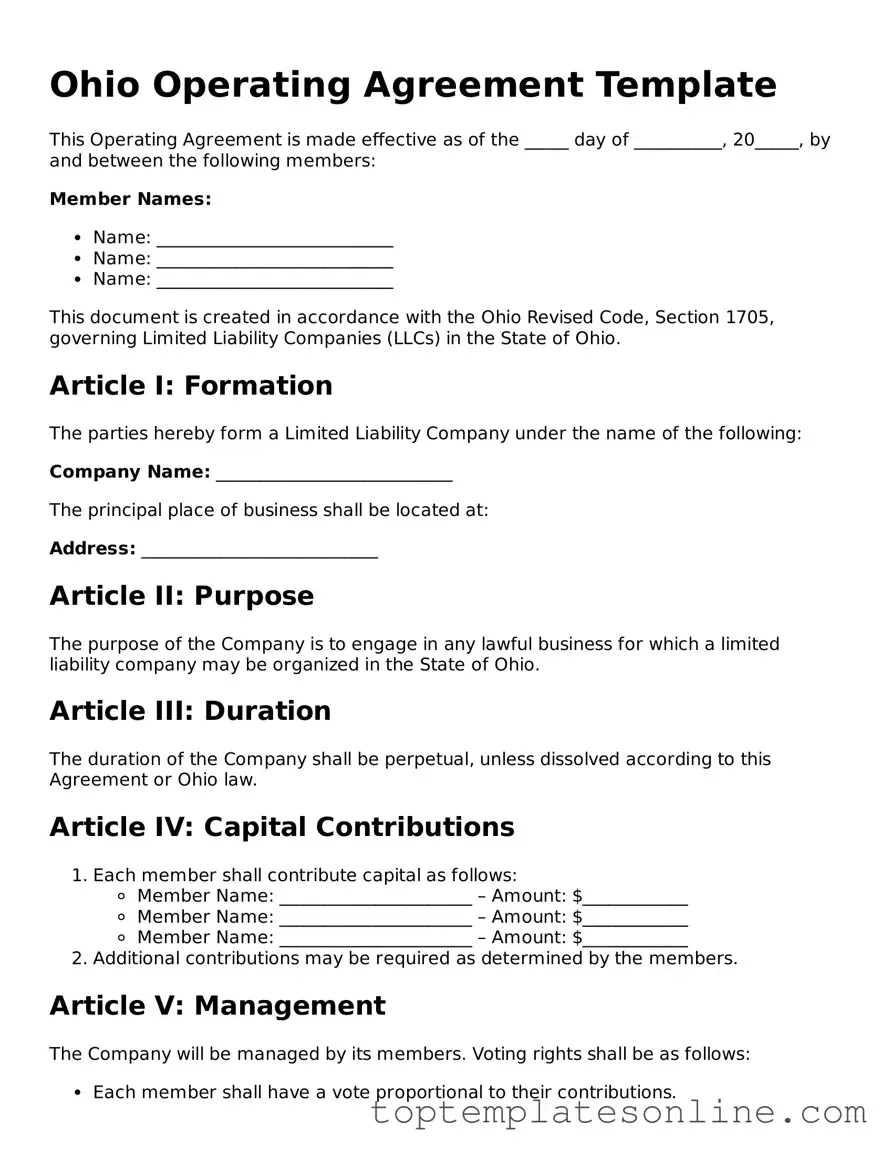Blank Operating Agreement Template for Ohio State
The Ohio Operating Agreement form is a crucial document for Limited Liability Companies (LLCs) in Ohio, outlining the management structure and operational guidelines of the business. This agreement helps define the roles of members and managers, ensuring everyone is on the same page. By having a clear operating agreement, LLCs can prevent misunderstandings and protect their interests.
Customize Operating Agreement Here
